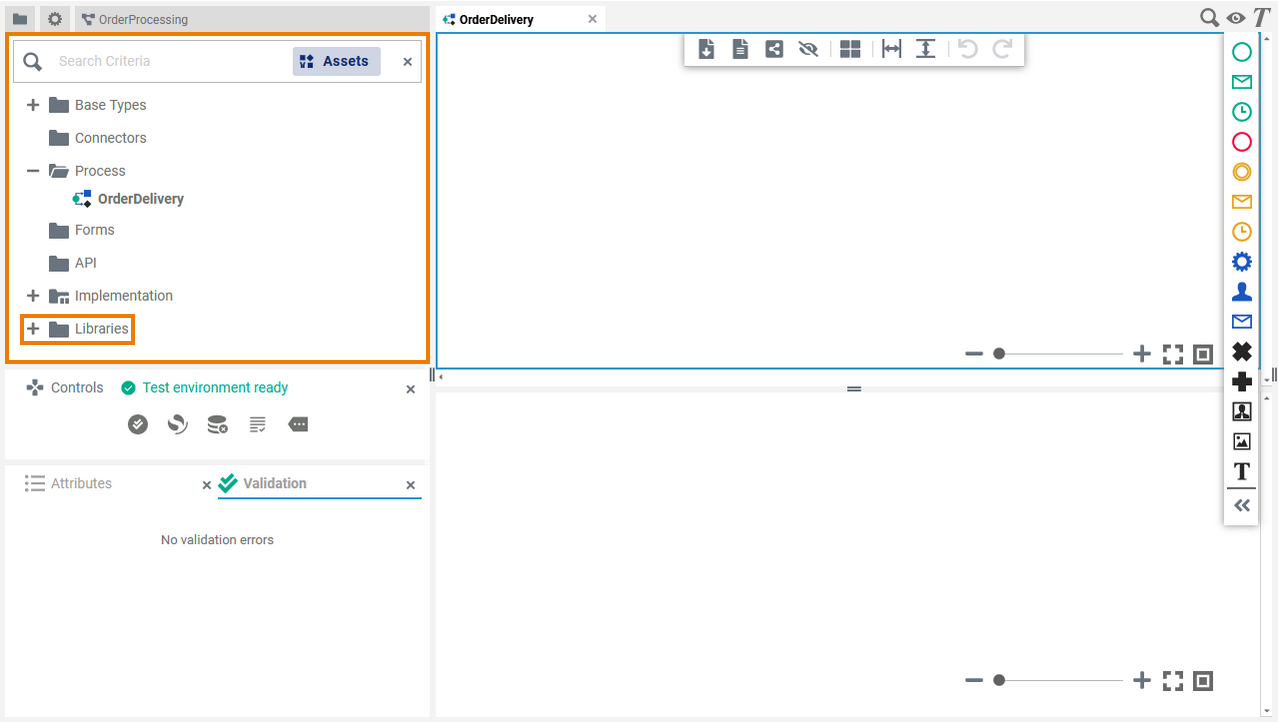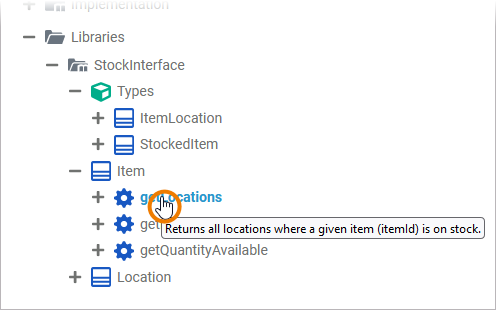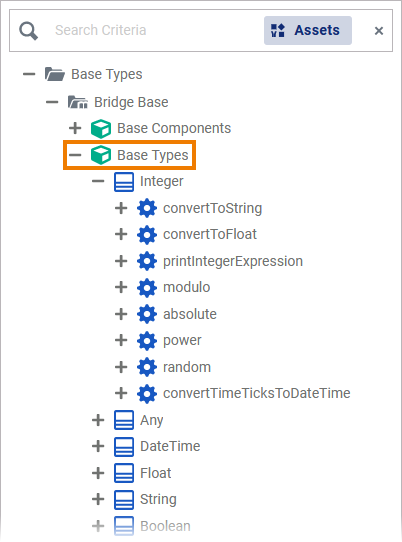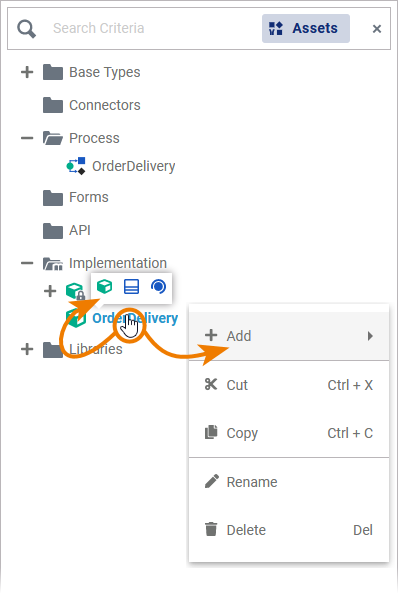The Library Concept
Using libraries has several advantages for developers:
- You can provide additional data types and operations via libraries.
- You can reuse implementations you have already developed with the Builder.
- You can use libraries for modularization:
- Implementations can be recycled in various processes via libraries.
- Multiple developers can contribute to the same process implementation by working on different libraries.
- Implementations can be recycled in various processes via libraries.
- You can add features to the Designer, for example access to backend systems, via libraries.
- You can use different versions of the same library as the library administration supports versioning.
Library Usage in Designer
In the Designer, you can create your own libraries, see page Creating a Library for details. If you want to use the libraries in a Designer service, you have to upload them to a namespace. This is done in the Libraries section of the Designer administration. The uploaded libraries are then available in all services created in this namespace. Since PAS 23.1.1 it is also possible to share a library with all users on your PAS installation. Refer to Sharing Designer Content for details.
How to upload your libraries to the Designer is explained in detail on page Administrating Libraries.
Once a library has been uploaded, you can add it to any service created in this namespace. To do so, open the service, click the  button and use the Asset Drawer to add them or go to the Libraries folder in the Service panel and use its context menu.
button and use the Asset Drawer to add them or go to the Libraries folder in the Service panel and use its context menu.
Go to page Adding Libraries for detailed information on how to add a library to a service. Refer to chapter Modeling Execution for further information about the usage of libraries during modeling. |
The Service Panel
The libraries you have added to a service reside in the Service panel.
| If you use the panel preset of the BPMN editor, the Service panel is displayed in the upper left corner of the editor. | |||||||||||||||
| The Service panel gives you direct access to all libraries of your service, and thus to all of your predefined classes, interfaces, operations and parameters.
A library can contain the following elements:
To expand an element in the tree, click on | |||||||||||||||
| Each library element can have a documentation. Hover your mouse on an element in the libraries folder to see if documentation is available. The documentation is displayed as a tooltip. | |||||||||||||||
| You can also copy & paste content from a library to the data model of your service: packages, classes, properties, operations and parameters - including their subelements. |
In addition to imported libraries with predefined data types, you can use the provided Base Types, or you can create your own data model.
| ||
| You can also define your own data types in folder Implementation. You can add your own packages, classes, interfaces, operations, properties and parameters.
|





